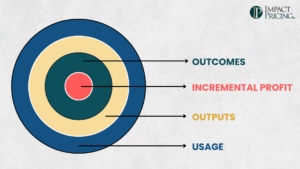Many companies give a discount to customers who buy in volume. Do you do this?
Stop reading for just a moment, and consider: Why do you do it? Why is it so common for companies to offer volume discounts?
One answer to this question is because it costs us less. We only had to process one order, so our expenses were lower per unit/product. It simply costs us less per unit when one customer buys more than one product at a time. Why shouldn’t we pass that savings on to our customer? This answer is common, and it’s logical, but it’s also wrong.
At least, it’s wrong from the perspective of optimal pricing. After all, why should we charge less simply because it costs us less? This sounds a lot like cost plus pricing. Optimal pricing is about pricing our customers’ willingness to pay for a product. The answer (our price) should be based on how customers perceive our value, not based on our costs.
3 Value Based Reasons to Give Volume Based Discounts
There are three good reasons for giving a volume-based discount. All of them are based on VALUE.
-
- Customers who buy higher volumes typically spend more money. The more someone spends on something, the more effort they’re willing to exert in order to get a better price. Customers who put in more effort to find or negotiate a lower price are by definition more price sensitive. If giving them a lower price keeps them from looking to our competitors for a lower price, then we get to win them.
- Our competitors may charge less for higher volumes – for many possible reasons. But their reasons don’t matter. However this means our customers are now comparing the price of 100 of our products to 100 of our competitor’s products, so our volume prices should at least be comparable (value-adjusted of course) to the volume prices of our competitors. If our competitors use volume-based pricing, we may in some cases need to do the same to remain competitive. Remember, our customers measure value by comparing our products and price to our competitor’s products and prices.
- For many products, especially consumer goods, a second unit is less valuable to a customer than the first – this is also known as the law of diminishing marginal utility in economics. Imagine you want to buy a CD, so you go into a record store and shop around. You find one you really want and are ready to check out when you see a sign: “Buy one, get the second one half price”. You weren’t going to buy a second CD – at least not at full price – but now you might shop around and find a second one, just so you can take advantage of the discount. This is an example of how a business can still capture a customer’s lower willingness to pay for a second or subsequent item. In this way, volume discounts allow you to capture incremental sales without having to discount the first sale.
These are three fair reasons to offer volume discounts. In your business, what volume discounts are you offering? Why?
The action you can take today
Think about your own volume discounts. Are you offering them for one of the three reasons above? If not, you might want to reevaluate the decision to discount.
Can you think of any other good reasons to give volume discounts? If you can, let us know in a comment below.















